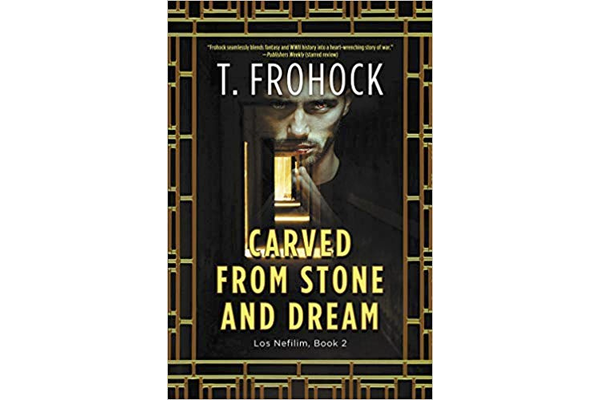The Seen and the Unseen: Queer Lives 1914-1945
To use the supernatural as a metaphor for the invisibility of queer men’s lives is a literary device, but it shouldn’t detract from the underlying historical elements of the story. Glimpses of the hidden queer history of the early twentieth century are finally becoming available through film, literature, and memoirs. As historians dig deeper into the accounts of marginalized communities and those who championed them, the veil of secrecy is pulled aside to give a more complete picture of queer lives during the tumultuous war years.
One of the earliest pioneers of gender studies, Dr. Magnus Hirschfeld, founded the Scientific Humanitarian Committee, which was established in 1897 under the motto, “Justice through Science.” (Sengoopta, 448) Hirschfeld’s primary goal was to make the unseen lives of the LGBTQ population seen through the scientific study of gender. In the hopes of educating laypeople about queer lives and the dangers inherent to a closeted existence, he harnessed the new medium of the silent film and the power of storytelling. He co-wrote and acted in a silent film called Anders als die Andern ("Different From the Others") in 1919.
Starring the prominent German actor, Conrad Veidt, the movie follows the life of a fictional concert violinist, who is blackmailed when a nefarious character realizes the violinist is in a relationship with another man. The latter part of the film centers around Dr. Hirschfeld’s testimony as he plays himself. As he often did real life, the fictional Hirschfeld testifies as an expert witness; in doing so, he employs photographs and scientific evidence in an innovative tutorial to reach the public.
Hirschfeld’s turn in the film is a perfect example of crossing storytelling with science to speak before an audience that otherwise would have never heard his lecture. Despite Hirschfeld’s efforts, sodomy laws remained on the books in Germany. While jurisprudence didn’t erase the existence of the queer community, many personal histories were lost as men were driven to hide behind the veil of heteronormative lives.
Exceptions involved the wealthy, but even they were required to adhere to a certain level of discretion. Those that violated societal norms, such as the Spanish novelist Álvaro Retana, were prosecuted.
As one of the more seen members of the LGBTQ community, Retana was born of a noble family—his father was the governor of Huesca and Teruel. With money and prestige to cushion him when his adventures ran afoul of the Spanish government’s more conservative laws, Retana lived the flamboyant life of a libertine. A prolific writer, his short novels were mildly pornographic stories of Madrid’s aristocratic queer men interacting with the working classes. In 1920, he spent five months in prison and paid a fine, a relatively light sentence, for being “an immoral writer.” Retana liked to brag that he was “’el primer novelista del mundo que ha ingresado en la cárcel acusado de voluptuoso’ [the first novelist in the world to have been sent to prison accused of being voluptuous].” (Cleminson, p. 244-45)
While the Retanas of the world managed to escape relatively unscathed, the Nazis’ march across Germany and France drove others deep into the realms of the unseen. On such survivor was Pierre Seel, a citizen of Strasbourg, who lacked Retana’s money and prestige.
Seel stands out because his family was middle-class and without the means to intercede when the Gestapo arrested him in 1941. According to Seel’s memoir, he survived interrogations and subsequent internment at the Schirmeck (Natzweiler-Struthof) concentration camp only to keep his experience a secret for over forty years in order to hide his homosexuality.
Unfortunately, other members of the queer community who survived the camps remain unseen primarily because homosexuality either was against the law, or considered an aberration of character in their home countries. Many died with their stories untold, their numbers and names forgotten.
Through these glimpses of queer lives, authors of historical fiction are left with a partial picture. Records generally show us the experiences of either the most privileged members of a society, who often escaped prosecution unharmed, or the most underprivileged, who suffered from laws designed to criminalize their behavior. There is rarely any middle ground and, except for a few rare cases, lives unseen slip through cracks.
Utilizing the intersection of history and fiction, authors have the ability to reimagine these missing histories and shape them for a variety of audiences, much as Hirschfeld did with Anders als die Andern. Metaphors, such as the supernatural or hidden societies, enables authors to tell historically accurate stories without perpetuating the myth of the fallen queer man, who suffers nothing but a life of tragedy. Although like Dr. Hirschfeld, authors might fail to connect with a broader audience, employing fictional narratives can show members of the queer community that their lives and their histories matter.
